Getting to Know the Dashboard
The Dashboard, which is the first page that displays after your log in to the RUCKUS One, provides a snapshot of the AI-based analytics, networks, venues, devices, alarms, incidents, and wireless clients associated with networking devices.
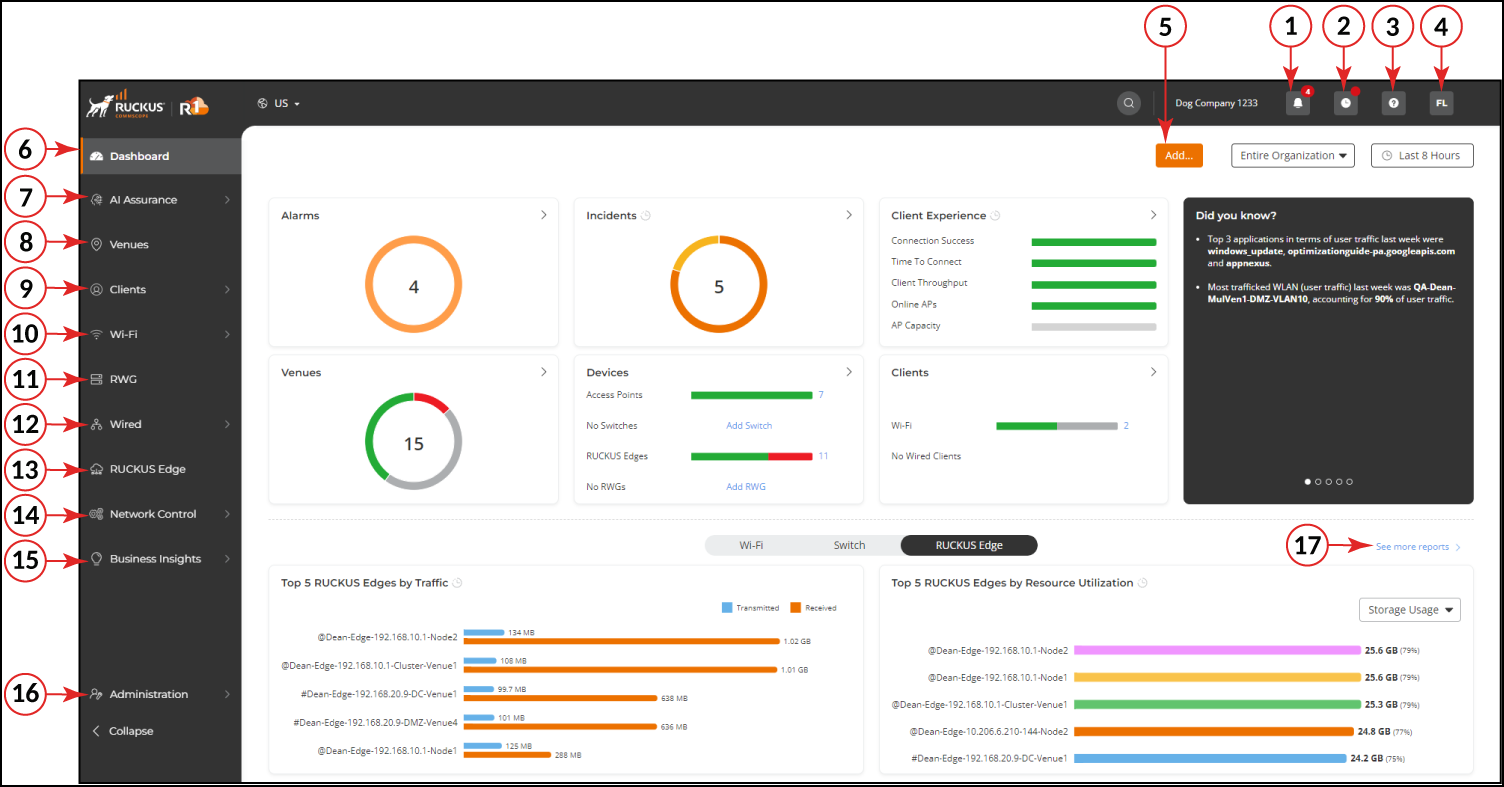
| Number | Tile's Name | Description |
|---|---|---|
| 1 | Alarms |
Displays the number of uncleared alarms that have been generated on your networks. When no alarms have been generated, the message No active alarms displays under Alarms. |
| 2 | Activities | Displays the activities in your network. |
| 3 | Help | Displays the following information:
|
| 4 | Account | Displays the initials of the first name and the
last name of the user account. When clicked, a menu displays the
following options:
|
| 5 | Add | Click Add to
add a Venue, Wi-Fi
network, or a Device
(Wi-Fi
AP or a Switch).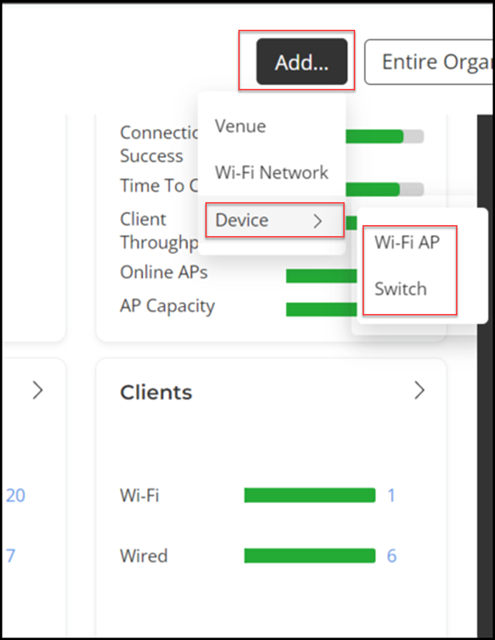
|
| 6 | Dashboard | The content area of the RUCKUS One
Dashboard displays the following information:
|
| 7 | AI Assurance | Displays incidents under AI
Analytics, and health, service validation, config
changes, and video call QoE under Network
Assurance. 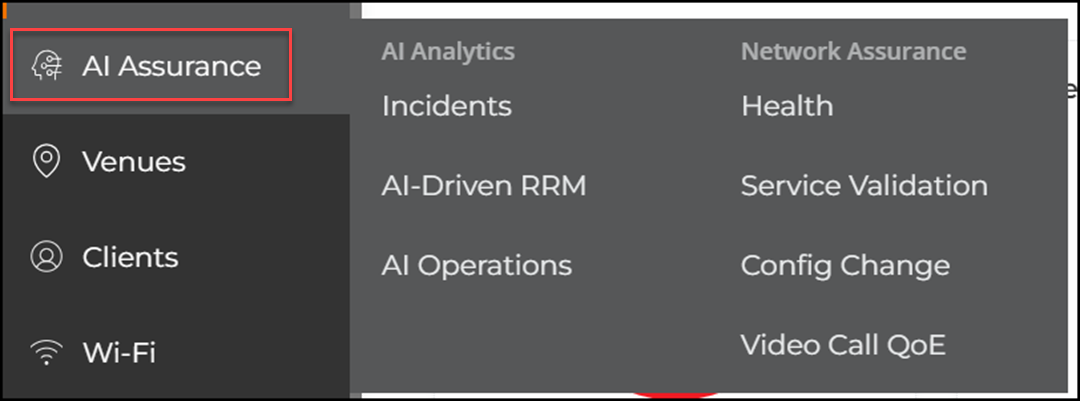
|
| 8 | Clients | Displays the number of Wi-Fi
clients currently connected to the managed APs, and the number of the
clients connected to a switch. 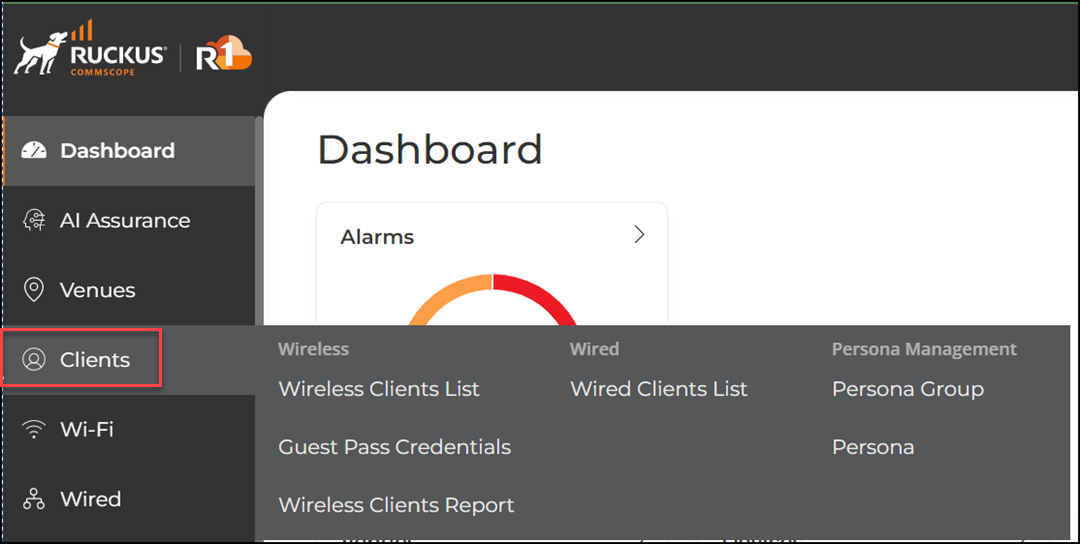
|
| 9 | Venues | Displays the number of venues that have been added. To view a summary of the venues, including their locations, descriptions, networks, number of APs, and number of active clients, switches, and switch clients, select a venue listed under Venue. |
| 10 | Wi-Fi | Displays the number Wi-Fi APs that have been added to
RUCKUS One. 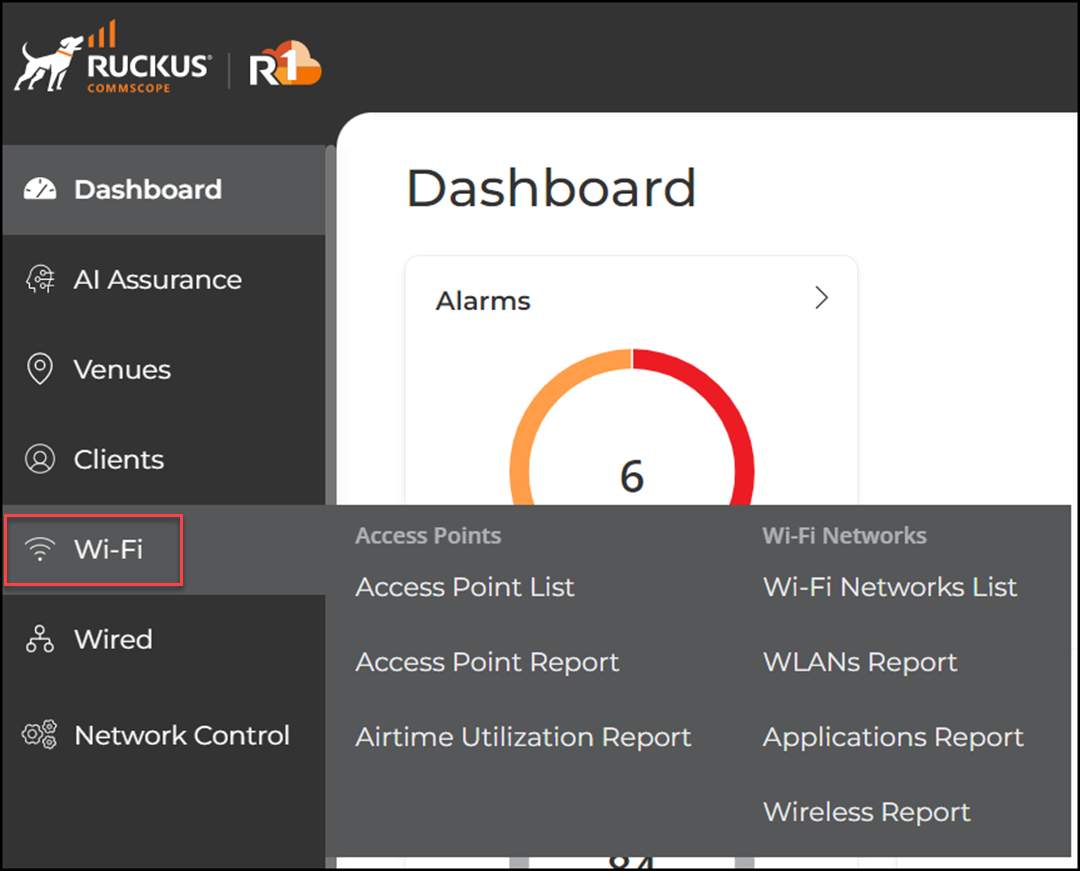
|
| 11 | Wired | Displays the number of switches that have been added to your RUCKUS One account. 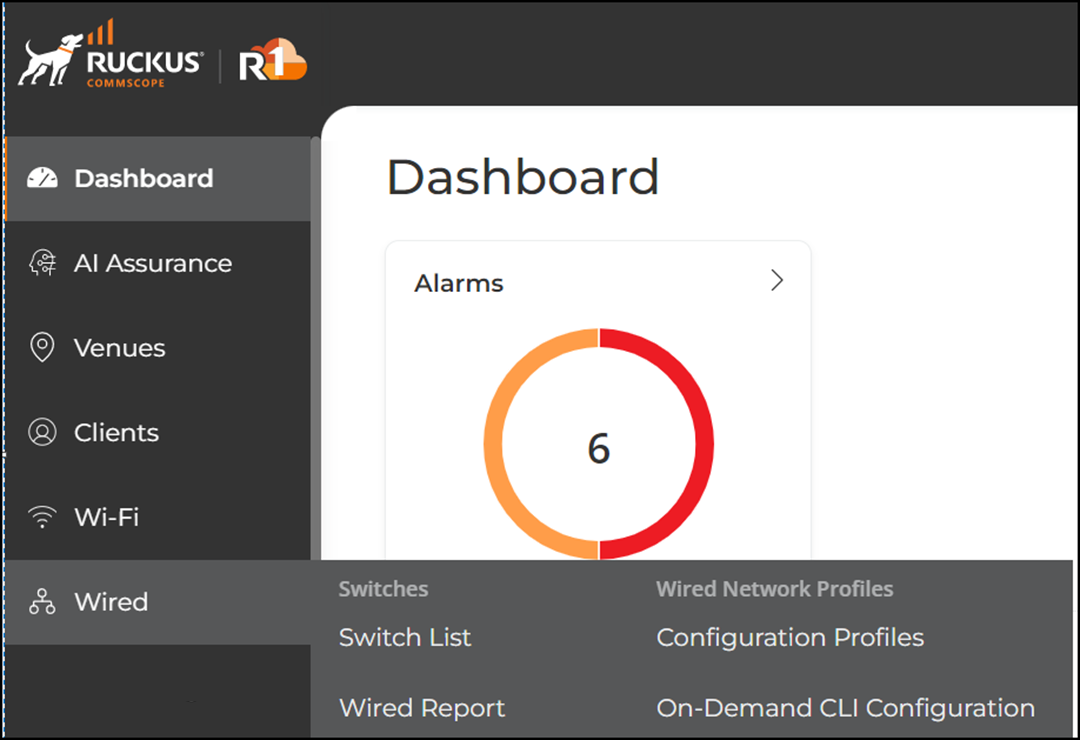
|
| 12 | Gateway | Displays the following sub-menus:

|
| 13 | Network Control | Under Network Control
, the following options are available:
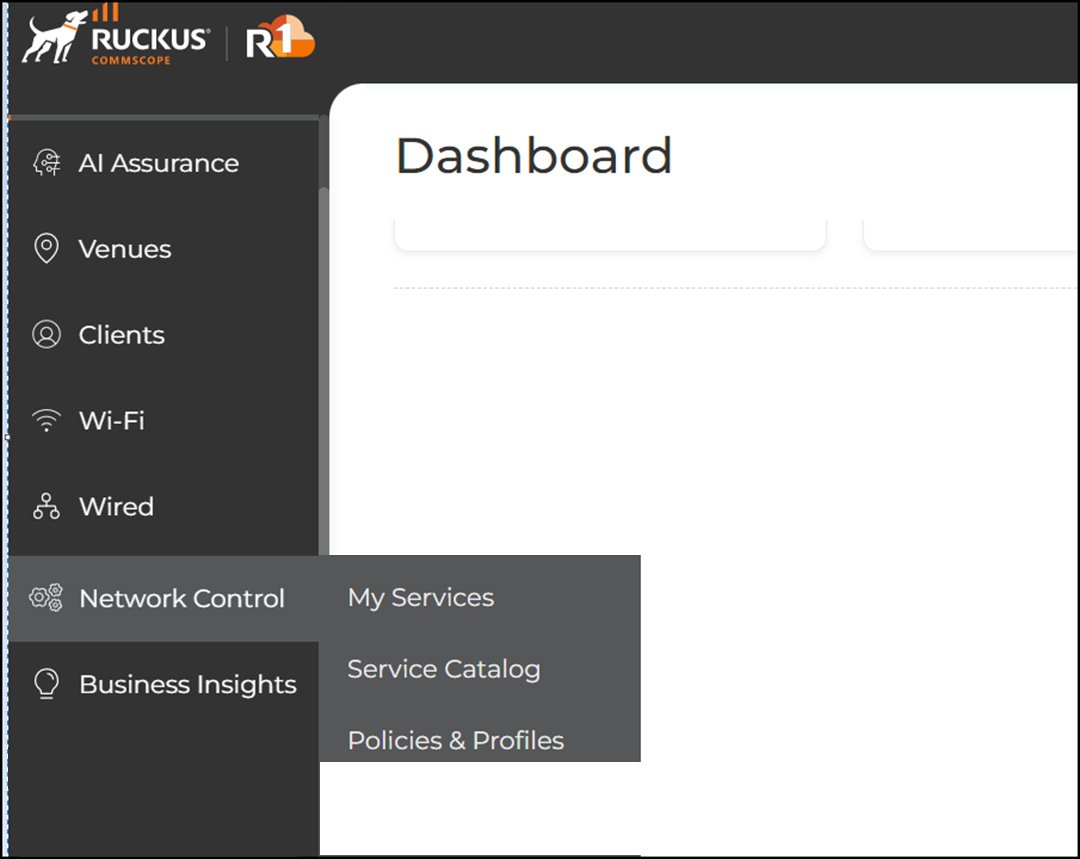
|
| 14 | Business Insights | Under Business
Insights, you can view the following options:
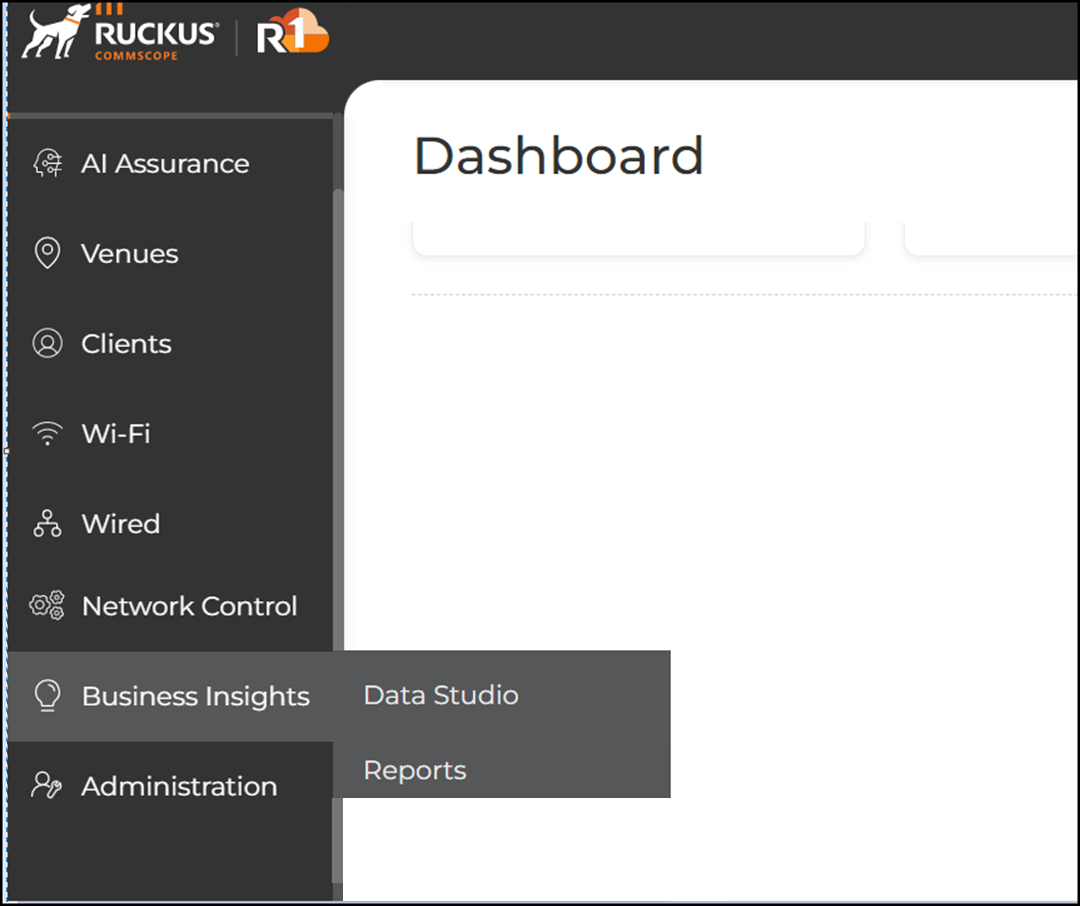
|
| 15 | Templates | Templates in RUCKUS One
provide predefined configuration frameworks that simplify and
standardize network setup across multiple devices and sites. You can use
templates to define consistent settings for various services, such as
authentication, certificates, and policies. The Templates menu allows you to view, create, modify, and apply configuration templates for supported service types. It also displays the enforcement status, drift information, and the date when the template was last applied. |
| 16 | Administration | Displays Activities,
Events, and Administrative Logs
under Timeline and
Settings,
Administrators, Notifications,
Subscriptions, Version
Management, and ZD Migration under
Account Management.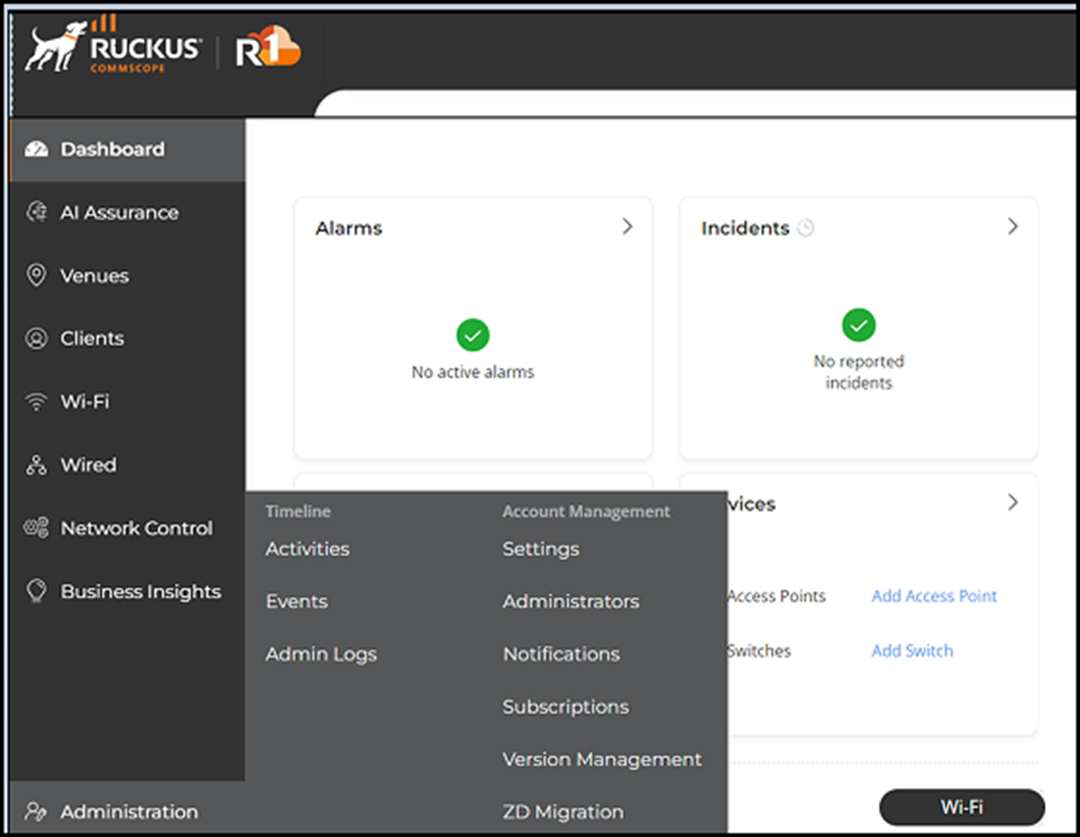
|
| 17 |  |
Click the dog icon to invoke the RUCKUS DSE which offers dynamic data visualization via customizable widgets and canvases, guided by an AI Onboarding Assistant. |
Color-Coding of Numbers for Venues, APs, Switches, and Clients
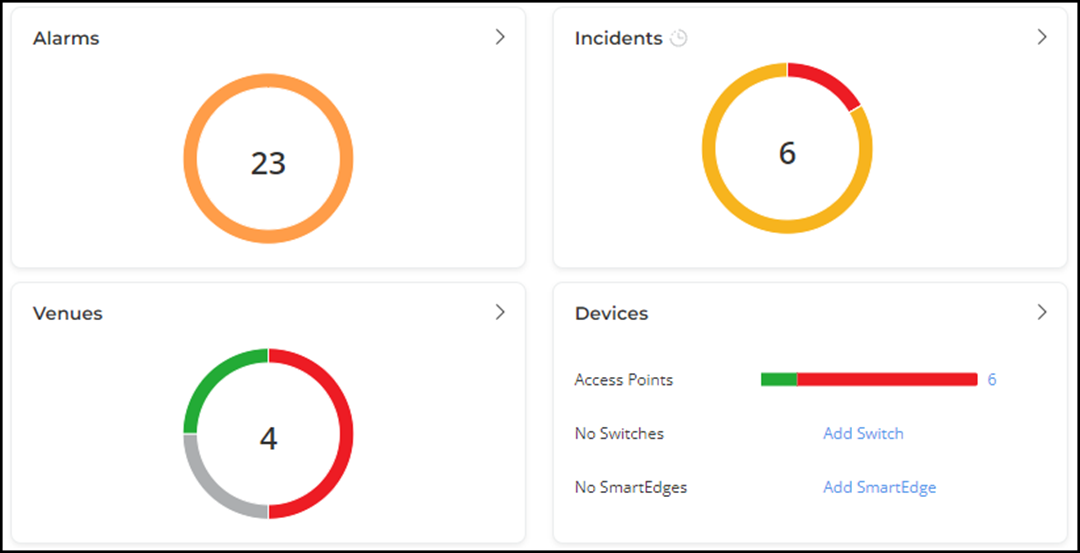
Alarms
- Red: Critical alarms
- Dark Yellow: Major alarms
Incidents
- Red: P1 Incidents
- Dark Orange: P2 Incidents
- Dark Yellow: P3 Incidents
- Yellow: P4 Incidents
Venues
- Green: Operational
- Gray: In Setup Phase mode
- Red: Require attention action
Devices
- Green: Number of operational APs
- Red: Require attention action/Disconnected from Cloud
- Gray: In Setup Phase
- Red: Alerting